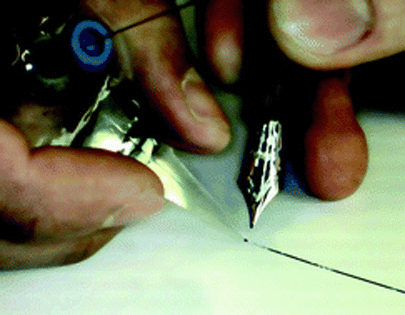Fountain pen for scanning electrochemical microscopy†
Abstract
A fountain pen

* Corresponding authors
a
Laboratoire d'Electrochimie Physique et Analytique, Ecole Polytechnique Fédérale de Lausanne, Station 6, Lausanne, Switzerland
E-mail:
hubert.girault@epfl.ch
Fax: +41 21-693 3667
Tel: +41 21-693 3145
b Department of Pure and Applied Chemistry, Center of Interface Science (CIS), Faculty of Mathematics and Natural Sciences, Carl von Ossietzky University of Oldenburg, Oldenburg, Germany
A fountain pen

 Please wait while we load your content...
Something went wrong. Try again?
Please wait while we load your content...
Something went wrong. Try again?
F. Cortés-Salazar, A. Lesch, D. Momotenko, J. Busnel, G. Wittstock and H. H. Girault, Anal. Methods, 2010, 2, 817 DOI: 10.1039/C0AY00096E
To request permission to reproduce material from this article, please go to the Copyright Clearance Center request page.
If you are an author contributing to an RSC publication, you do not need to request permission provided correct acknowledgement is given.
If you are the author of this article, you do not need to request permission to reproduce figures and diagrams provided correct acknowledgement is given. If you want to reproduce the whole article in a third-party publication (excluding your thesis/dissertation for which permission is not required) please go to the Copyright Clearance Center request page.
Read more about how to correctly acknowledge RSC content.
 Fetching data from CrossRef.
Fetching data from CrossRef.
This may take some time to load.
Loading related content
